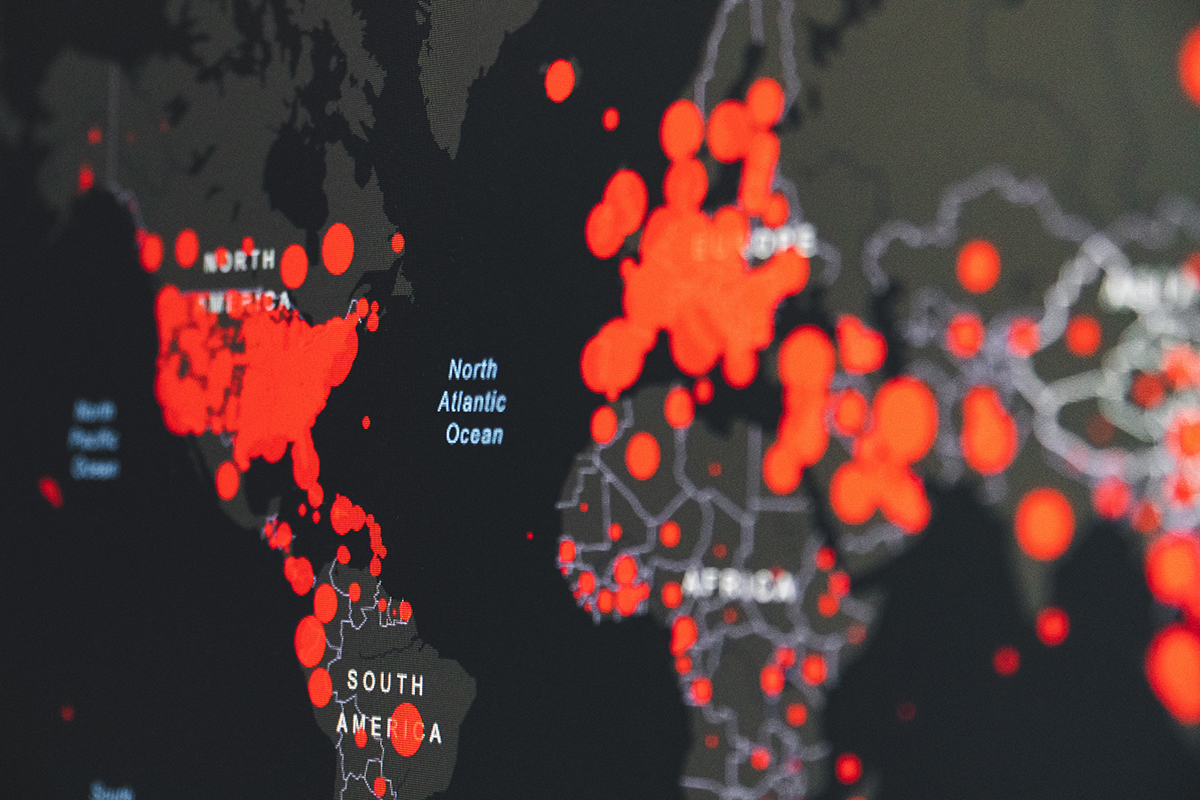
Frictions, COVID-19, and a parallel with Connectography
mars 13, 2020 — The Big Picture
In a world defined by the constant movement of goods, capital, people, data and all else, building a smart city is to build a city with the least friction possible in order to maximize its flow. COVID-19 reminds us that frictions are sometimes a necessity, even when the flow of people as economic actors is concerned.
The necessity of frictions in smart cities
The recent maps illustrating the global spread of COVID-19 reminded me of a similar map. By digging through my library, I found it, the book cover I was envisioning: Connectography Mapping the Future of Global Civilization by Parag Khanna.

His concept of connectography is the fusion of connectivity and geography, or the “the enablement of supply chains, both physical and digital, which are now the conduits of our economies” as explains Khanna.
In short, it all comes down to flows and frictions. Resources, goods, capital, technology, people, data, and ideas are all flows, whereas borders, conflict, sanctions, distance, and regulations are different types of frictions. The world is built today around these two concepts, either balanced or played against each other based on, hopefully, strategic decisions and goals.
From a connectography perspective, I would define a smart city as a city trying to maximize its flows by leveraging new technologies such as the Internet of Things (IoT), Information and Communication Technology (ICT), and data management. Insights gained from data collection and processing are used to manage assets, resources, and services efficiently, enabling rapid urbanization. The promise of jobs and prosperity pulls people to cities, with the instinct that the more people involved, the less friction is needed to balance humanity’s rapid urbanization.
The COVID-19 Scenario
The coronavirus originated—according to what is known today—in Wuhan, one of China’s largest industrial hubs, and home to several Chinese and international corporations. Unlike Ebola, the first COVID-19 cluster appeared at the center of a large global flow. And although the virus does not travel, humans do, amplifying the severity of a pandemic in our globalized world.
In order to stop COVID-19, unified global action has had to stop the flow of people, travelers, and workers. A difficult political decision to make when it comes to the “primary flow”, the flow all other flows serve and use–the movement of people traveling, commuting, and living their everyday lives. It explains the delay in implementing drastic actions such as quarantines and confinements. These are frictions disrupting today the flows which shape and define the connected world we live in.
COVID-19 comes as a stark reminder to all city planners, smart city thinkers, and politicians that greater flows bring greater risks. And that systems must be ready to balance sudden disruptions such as quarantines, medical screenings at airports, medical inventory shortages such as stocks of masks, and testing centers. Flows and frictions are, as described by Parag Khanna, “in perpetual negotiation, constantly calibrated to suit strategic goals”. Connectivity comes with complexity and risks, so when we build our smart cities, we should be aware of the potential swing of the pendulum while trying to maximize flows.